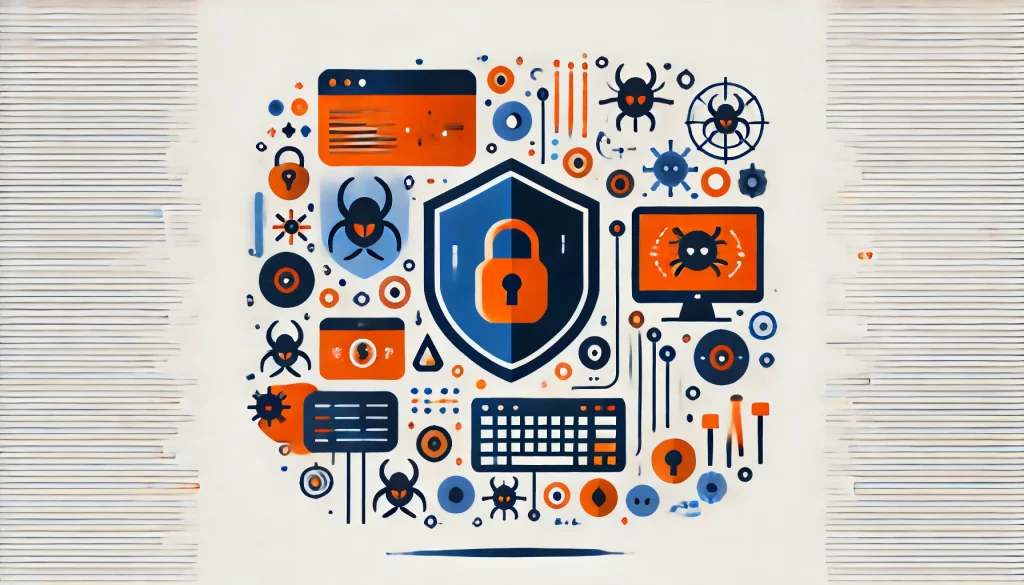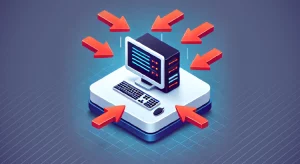
Malware Protection: Best Practices for Prevention and Detection

Malware has become a pervasive threat to individuals and organizations alike. This malicious software infiltrates computers and networks, causing data theft, system disruption, and financial losses. The consequences of a malware infection can be devastating, ranging from the loss of sensitive information to the shutdown of critical infrastructure. To safeguard your systems and data, it’s crucial to understand what malware is and the steps you can take for effective malware protection and detection.
Common Types of Malware
Malware comes in various forms, each designed to exploit vulnerabilities and wreak havoc in different ways. Some of the most prevalent types of malware include:
Ransomware: This type of malware encrypts files on infected devices and demands payment in exchange for the decryption key. Ransomware attacks often begin with a malicious email attachment or a download from a compromised website. Once executed, the malware quickly spreads through the system, locking users out of their files and displaying a ransom note. The infamous WannaCry ransomware attack in 2017 affected over 200,000 computers across 150 countries, highlighting the widespread damage these assaults can cause.
Worms: Worms are self-replicating malware that spread from one computer to another without requiring human interaction. They exploit weaknesses in networks and operating systems to propagate rapidly, consuming bandwidth and resources as they go. Worms can carry additional malware payloads, such as backdoors or spyware, to further compromise infected systems. The Mydoom worm, first detected in 2004, became one of the fastest-spreading email worms in history, causing an estimated $38 billion in damage worldwide.
Trojans: Named after the legendary Trojan Horse of Greek mythology, this type of malware disguises itself as legitimate software while carrying a malicious payload. Trojans often come bundled with other types of malware, such as backdoors, spyware, and keyloggers.
Once installed, they can grant attackers remote access to the infected system, steal sensitive information, and even transform the compromised device into a botnet slave. The Zeus Trojan, which first appeared in 2007, targeted online banking information and is estimated to have infected over 3.6 million computers in the United States alone.
Malware Protection: Safeguarding Your Systems
To protect your systems from the ever-evolving threat of malware, a multi-layered approach is essential. Implement these best practices for effective malware protection:
Keep Software Up-to-Date: Regularly update your operating system, browsers, and applications to patch known vulnerabilities that malware exploits. Enable automatic updates whenever possible to ensure your systems are always running the latest security patches.
Use Reputable Anti-Malware Software: Install and maintain trusted anti-malware solutions from reputable vendors. These tools provide protection against known and emerging threats and automatically update their malware definitions to stay ahead of the curve.
Be Cautious with Email Attachments and Links: Email remains one of the most common vectors for malware delivery. Avoid opening suspicious email attachments or clicking on links from unknown sources, as these can trigger malware downloads or direct you to malicious websites. Educate your organization on how to recognize and report phishing attempts.
Implement Network Segmentation and Access Controls: Segment your network into distinct zones based on trust levels and business functions. Apply strict access controls to limit the spread of malware in case of compromising one segment. Use firewalls, virtual private networks (VPNs), and other security tools to monitor and control network traffic.
Regularly Back Up Your Data: Maintain regular, secure backups of your critical data to minimize the impact of a successful malware attack. Store backups offline or on separate network segments to protect them from malware that targets connected systems. Test your backup and restoration processes to ensure they work as expected.
Educate Yourself and Others: Stay informed about the latest malware threats and attack vectors. Spread security awareness, providing regular training on safe computing practices, such as strong password management and reporting potential security incidents promptly.
Malware Detection: Identifying and Responding to Threats
Despite the most robust preventive measures, malware may still find its way into your systems. Effective malware detection is crucial for minimizing damage and preventing future incidents. Key strategies for malware detection include:
Monitor Network Traffic: Utilize network monitoring tools to detect unusual traffic patterns or communication with known malicious domains. Pay close attention to sudden spikes in network activity, unexplained data exfiltration, and connections to unfamiliar external resources.
Conduct Regular Scans: Schedule comprehensive malware scans of all devices and systems connected to your network. Use a combination of signature-based and heuristic detection methods to identify known malware strains and detect previously unseen threats based on suspicious behavior patterns.
Investigate Anomalies: If you notice suspicious activity, such as unexplained system slowdowns, unfamiliar programs running in the background, or unauthorized changes to system configurations, investigate promptly to determine if malware is the cause. Engage your IT security team or external experts to analyze the situation and recommend appropriate actions.
Implement Endpoint Detection and Response (EDR): Deploy EDR solutions on your endpoints (devices) to continuously monitor for signs of malware activity. EDR tools collect and analyze data from multiple sources, including system logs, network events, and user behavior, to detect and respond to threats in real-time.
Have an Incident Response Plan: Develop and regularly review an incident response plan that outlines steps to contain, eradicate, and recover from a malware infection. Your plan should include clear roles and responsibilities, communication protocols, and escalation paths. Regularly test your incident response capabilities through simulated exercises to identify gaps and improve your readiness.
Real-World Malware Examples
To better understand the impact of malware, consider these real-world examples:
The Stuxnet worm, discovered in 2010, targeted industrial control systems and was responsible for causing substantial damage to Iran’s nuclear program. Stuxnet exploited multiple zero-day vulnerabilities and sabotaged centrifuges used in uranium enrichment processes, setting back Iran’s nuclear ambitions by years.
The CryptoLocker ransomware, which emerged in 2013, encrypted users’ files and demanded ransom payments in Bitcoin. It infected over 250,000 systems worldwide and generated an estimated $3 million for its creators before being taken down by law enforcement. CryptoLocker highlighted the lucrative nature of ransomware and inspired countless imitators in the years that followed.
The Emotet Trojan, first detected in 2014, evolved into a sophisticated malware threat that continues to plague organizations today. Initially designed as a banking Trojan, Emotet has since developed worm-like capabilities to spread through networks and drop additional malware payloads, such as ransomware and info-stealers. It often relies on phishing emails and malicious document attachments to infect its targets.
Conclusion
Malware continues to evolve and threaten individuals and organizations alike. By understanding the different types of malware, implementing strong malware protection measures, and having effective detection and response capabilities in place, you can significantly reduce the risk of falling victim to these malicious attacks. Stay vigilant, keep your systems secure, and always be ready to adapt to the ever-changing malware threats. Remember, the best defense against malware is a proactive, multi-layered approach that combines technology, processes, and people.
